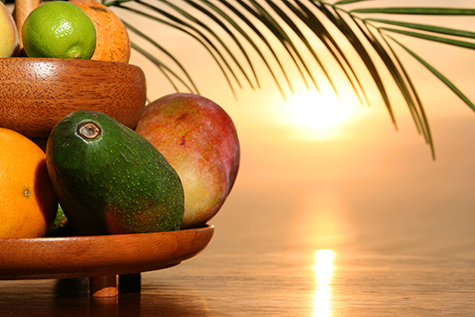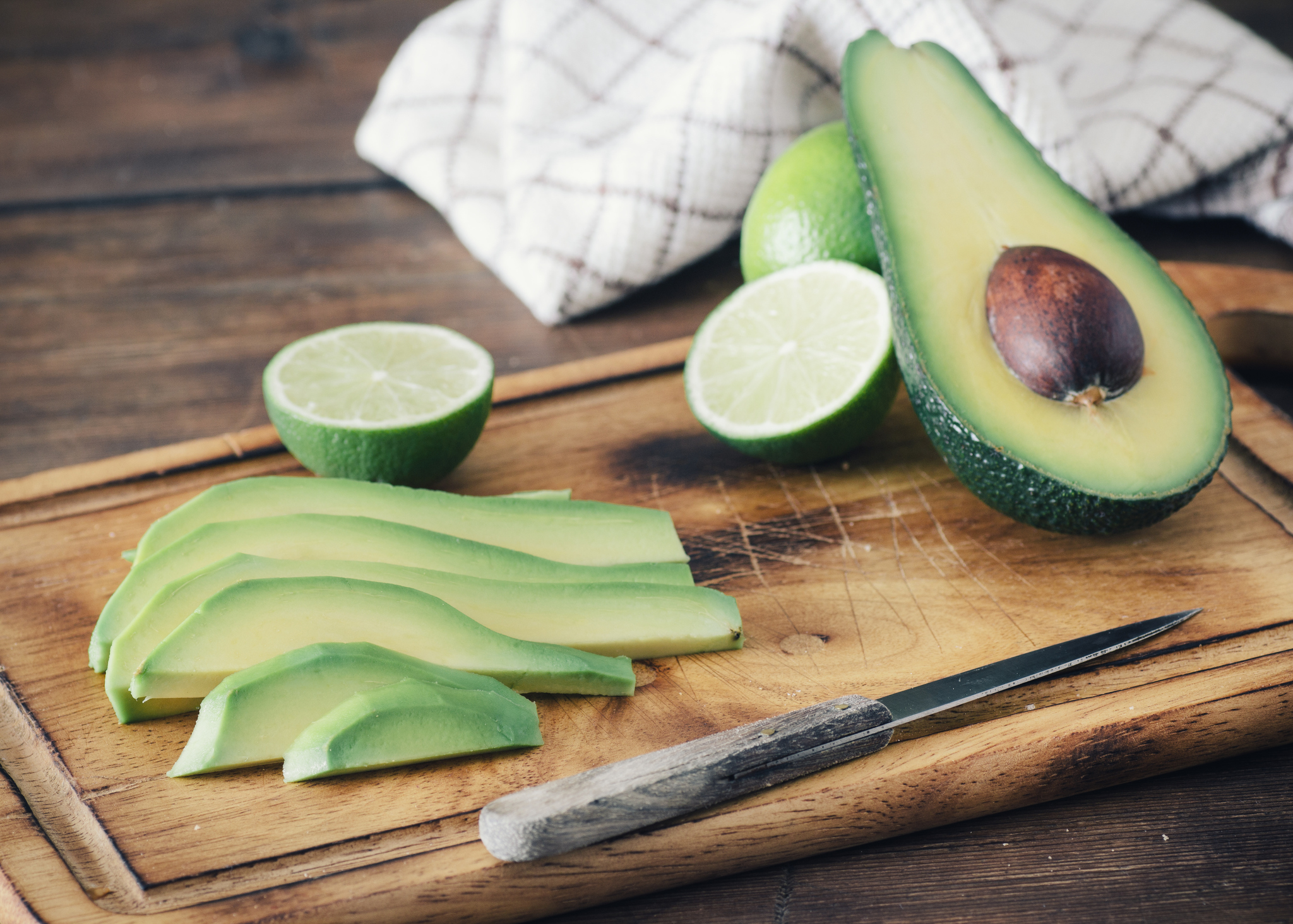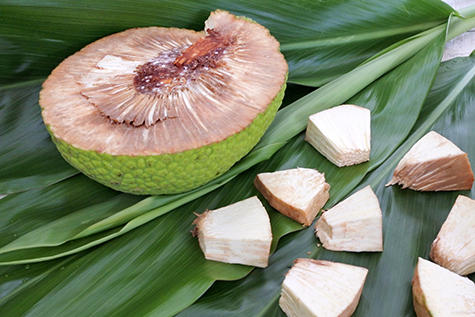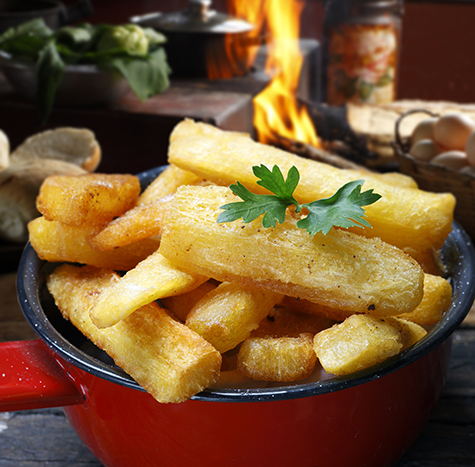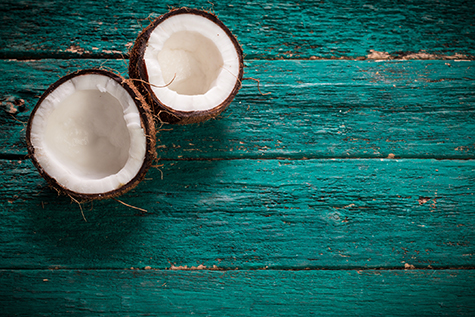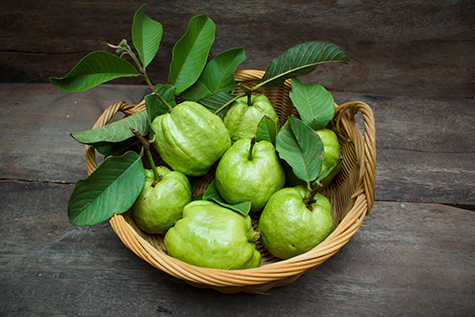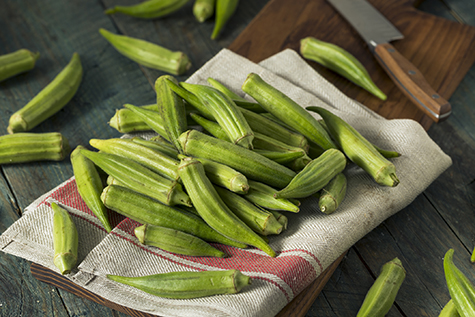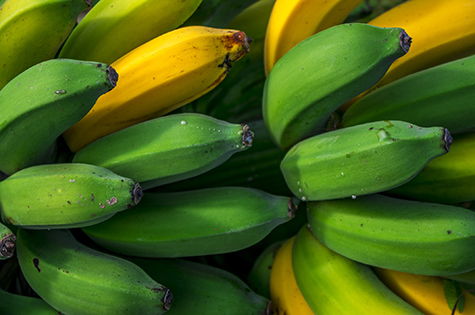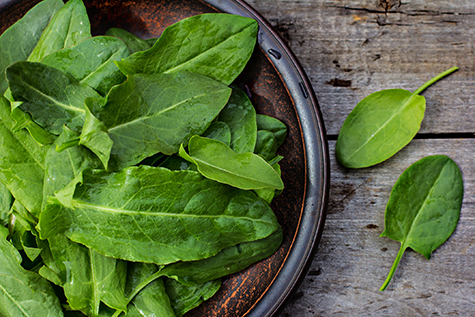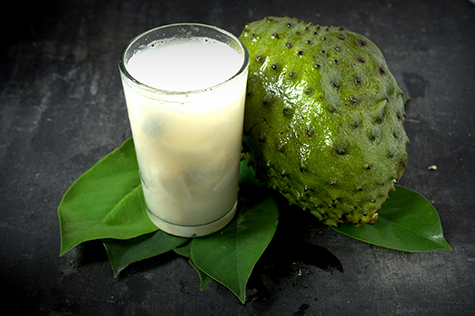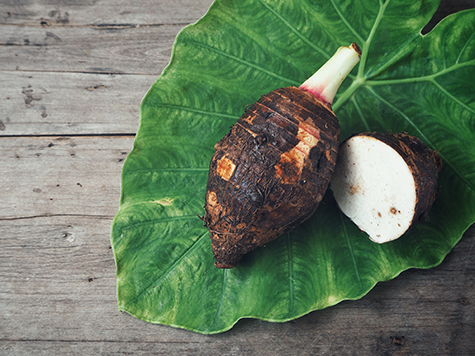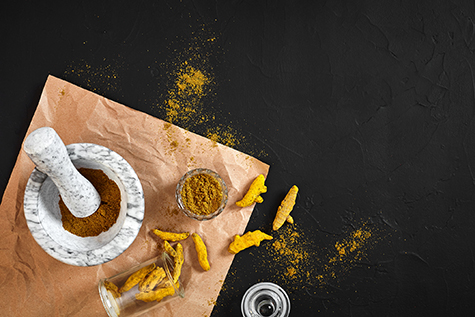Eat to the Beat of Caribbean Superfoods!

The Caribbean is blessed in so many ways. There is the famous weather, which is warm and sunny during the winter when most of North America is shivering, and the gorgeous turquoise water and sugary white (or sometimes pink!) sands with Calypso music wafting.
What I love about the Caribbean is the blend of cultures, which gives richness to the language, traditions and especially the food. There are influences from every civilization, East and West, that ever set foot on these island gems — from the indigenous Amerindian people, who were followed by British, Spanish, French and Dutch explorers, to Africans, who were followed by the Chinese and East Indians.
With its lush tropical climate, there’s always an endless array of fruits and vegetables to enhance the local fish, poultry and meat, all prepared through the prism of the area’s eclectic culinary traditions. And as it happens, the exotic plant-based foods that are characteristic of Caribbean cooking are loaded with healthful FoodTrients.
Here are eleven Caribbean superfoods that will have you longing for the sounds of a steel drum and a tropical paradise:
Avocado – Everybody’s favorite! The rich, buttery flesh is full of vitamins K, C, A, E and a host of B vitamins. Avocados are also high in potassium and magnesium. They’re a good source of dietary fiber and healthful, monounsaturated fat, which helps the body absorb other fat-soluble nutrients including alpha and beta-carotene as well as lutein. For a super summer treat, make a salad of avocado chunks, cherry tomatoes cut in half, and fresh corn sliced off the cob. Drizzle with fresh lime juice.
Breadfruit – A staple in tropical countries, breadfruit is high in complex carbohydrates as well as a good source of calcium, fiber, antioxidants, magnesium, niacin, omega-3, potassium and vitamins A and C. Like squash, breadfruit can be baked, grilled, fried or boiled. You can find fresh breadfruit in ethnic markets. Sprouts Farmers Markets and Trader Joe’s sometime carry them. You can also purchase it canned.
Delight guests with this recipe featuring breadfruit. Great as a side dish to Baby Back Ribs with Baobab Sauce, which is featured in my Age Beautifully Cookbook.
Smoky Breadfruit with Turkey Bacon
SERVES 4
1 Tbsp. avocado oil
1 large onion, minced
1 fresh red pepper, stemmed, seeded, and chopped
1 clove garlic, minced
1/4-pound turkey bacon, diced
3 scallions, finely chopped
1/2 jalapeño pepper, stemmed, seeded, and chopped
1 tsp. fresh thyme
¼ tsp. smoked paprika
¼ tsp. light soy sauce
4 cups unsweetened coconut milk
1 large breadfruit, peeled, seeded, and chopped into large chunks (or 1 16 oz. can, drained)
coarse or kosher salt and freshly ground black pepper to taste
- Heat the avocado oil in a deep saucepan and add the onion and fresh red pepper. Sauté until soft.
- Add the garlic and bacon and sauté for 1 minute more. Add the scallions, jalapeño, thyme, smoked paprika and sauté for 1 minute, stirring constantly.
- Add the soy sauce, stir in the coconut milk and bring to a boil.
- Mix in the breadfruit and salt and black pepper to taste. Lower the heat and cover.
- Simmer for 30 to 40 minutes, or until the breadfruit has absorbed all the coconut milk. Serve hot.
Cassava (yuca) – Cassava/yuca is a plant with a starchy, edible root that is grown and eaten in Latin America, Africa, South Asia and the Caribbean. In the Philippines, it’s called cassava where it’s used mostly for desserts like pudding and cake. But by steaming and mashing it, it makes a tasty and healthful starch alternative to potatoes and rice. In Latin cuisine you see yuca cut into thick strips and fried. The taste is slightly sweet and nutty, . . . and like yams or sweet potatoes, yuca can have sweet or savory applications. Cassava/yuca is high in healthful carbohydrates, and is a good source of vitamins C and A, and provides a good number of B-complex vitamins. It also contains manganese and is high in antioxidants.
SAFETY TIP: It’s very important to peel fresh cassava completely before cooking and it is never eaten raw. The skin contains cyanide, which at certain levels is toxic.
Coconut – Highly valued for its nutrition and versatility.
- Coconut water, a natural sports drink, is the thin, opaque liquid found inside the fruit and contains electrolytes and potassium.
- Coconut flesh or meat is high in fiber, potassium and iron. Shred it for cakes, cookies and desserts. Roll fresh pitted dates for a simple, healthy treat.
- Coconut milk or cream is made from equal parts water and coconut meat that has been put through a food processor. Then it’s cooked down and strained. It’s used for sauces, soups and drinks. It’s also available in cans.
- Coconut oil had a bad reputation for a while. The fat in it is saturated; however, it contains medium chain triglycerides, which are metabolized differently from other saturated fats. The fat in coconut oil is converted into energy rather than stored as fat. Look for cold pressed for the most health benefits.
The Shrimp and Moringa Curry recipe in my Age Gracefully Cookbook combines many delicious superfoods, including coconut milk, garlic, ginger, and moringa powder.
Guava — The fruit has a sweet musky aroma and a creamy texture. The flesh may be yellow or white to pink or red. When the fruit is ripe, it has a sweet, tart flavor. Guavas are high in dietary fiber, folic acid, potassium, copper and manganese. They contain good amounts of Vitamin A and four times more vitamin C than an orange! Studies in India suggest that guava can lower blood pressure, help stabilize blood sugar and lower cholesterol. Look for them in specialty and ethnic supermarkets. Guava and guava nectar can be found in cans. Check out this recipe for Guava Soup.
Okra – African slaves brought okra plants to the new world where the long, ridged pods are usually sliced cross-wise and cooked in soups (think gumbo), stews or fried. When cooked, okra thickens liquids. It’s low in calories, high in fiber and contains potassium, vitamin B, vitamin C, folic acid, and calcium. Recent studies have suggested that okra helps to manage blood sugar and diabetes.
Want to give okra a try? Moringa Vegetable Soup is a real vegetable lover’s recipe and packed with FoodTrients.
Plantains – These are a large, firm variety of banana, also known as cooking bananas. If cooked when green, they have a savory, almost squash-like flavor. When allowed to ripen they are sweet. Ripe or green, plantains are usually fried or grilled. Plantains are high in flavonoids and antioxidants, which help lower cholesterol. Plantains are also a good source of vitamin B6, and in their raw form, vitamin C. Green plantains are rich in fiber that benefits digestive health.
If you love assertive flavors and the ease of crock pot cooking, my recipe for Crock Pot Chicken with Annatto and Plantains is for you.
Sorrel – These are dried hibiscus flowers and are used to make a red ‘Jamaican’ punch or tea. Recent research has shown the flavonoids in sorrel may help protect against certain types of cancers as well as reduce triglycerides, which are associated with heart disease and diabetes. Sorrel also boosts the body’s immune system and it’s a natural diuretic. Sorrel provides nutrients including vitamin C, calcium, iron niacin and riboflavin. You can find sorrel in Latin and Caribbean markets or order it from Amazon. It’s delicious brewed in a tea with ginger.
Soursop — Also known as custard apple, one taste of this creamy tropical fruit and you’ll know why! The skin is bitter, but the sweet pulp is used to make nectar, smoothies, fruit juice drinks, as well as sorbets and ice-cream flavorings. Soursop contains good amounts of vitamin C and several B vitamins such as thiamin, riboflavin and niacin, along with calcium, phosphorus and a small amount of iron.
For a rich, healthy beverage, Soursop Lassi from the Aging Gracefully Cookbook is perfect for a summer pick-me-up.
Taro – Known as the ‘potato of the tropics’, taro is a root vegetable with a nutty flavor when cooked. The leaves are also edible. Booth the leaves and root must be thoroughly cooked or they can be toxic. Cooked taro root is a rich source of magnesium, iron, potassium, manganese, zinc, copper and phosphorus. It contains good amounts of antioxidants, as well as vitamins A, B6, C and E. This vegetable has four times the fiber of potatoes. It can also be used to make a superfood latte.
Turmeric — Turmeric is related to ginger root and provides the distinctive bright yellow color to curry (which is a blend of a number of spices). The health benefits come from the component, curcumin, which is used in various drugs as an immunity booster and anti-oxidant. Turmeric is 5-8 times stronger than vitamin E and more effective for fighting infection than vitamin C. It also helps in maintaining normal cholesterol levels and slows aging. Turmeric is extremely versatile, adding stunning color and flavor to soups, sauces, stews, rice, chicken and fish.
